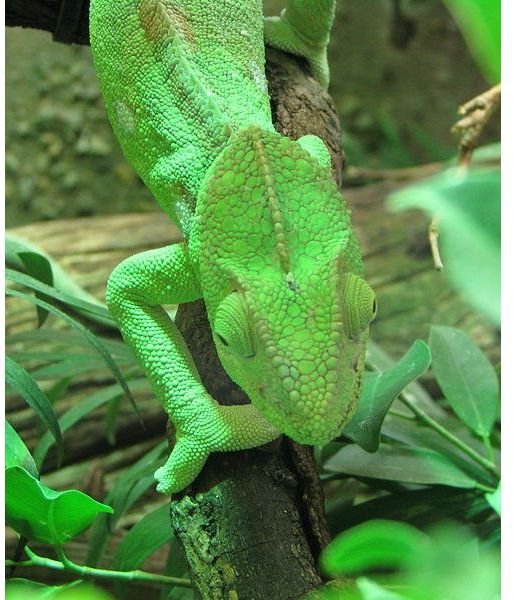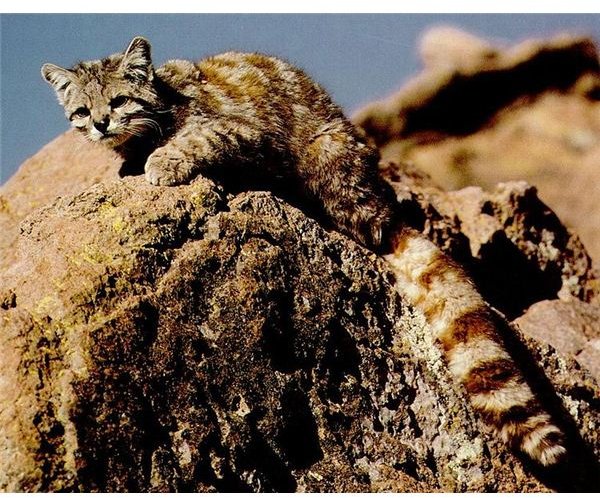Camouflage Animals: How do Animals Camouflage if the Environment Changes?
The Importance of Camouflage to Animals
Camouflage is not just about chameleons changing their colors in an instant but it’s also about polar bears being white and not brown like the grizzlies. In fact, a zebra with its striped covering is a camouflage animal. In order to understand these animals’ mastery of the art of deception, we should first have an idea why they have this cunning ability.
The main objective of a camouflage animal when it assumes a “blending in” effect is to avoid being victimized by its predator or to increase its chances of victimizing its prey. Basically, camouflage is an important tool animals use for survival. This can be influenced by the animal’s environment, its physiology, its characteristics as a prey, or its behavior as a predator. Scientists believe that the reason why all animals do not have this ability is because not all animals need to camouflage themselves in order to survive.
The most important element for camouflage is the animal’s environment wherein it uses its surrounding to develop the techniques that can easily conceal them, even in the open. The animal’s physiology is another factor why some animals can assume different forms or colors in order to conceal themselves. Animal behavior can also influence its camouflage ability since it may manifest a stronger tendency to physically hide, flee or swing away from tree to tree as soon as they can sense danger.
The image you see on your upper-left is that of the cuttlefish as it blends in with an assortment of moss covered rocks and stones.
How Animals Assume their Deceptive Appearances

Some camouflage animals have biochromes while some have microscopic structures that serve as light refractors to achieve certain color combinations. This will depend on the animal’s physiology.
Camouflage Animals with Biochromes - These are animals who also have certain chemical compositions that allow the microscopic pigments in their external coverings called biochromes, to absorb and chemically produce their color combinations. The most apparent or visible colors transmitted in the form of wavelengths refracted by the light in the animal’s surroundings, will dictate the color or appearance of the camouflage animal. Hence, the amount of day light will also influence the color that an animal will assume.
The most common example of these types of animals is the chameleon with its remarkable abilities to match the exact color of its surroundings. Other species include insects that have the ability to take the form of bird droppings or some butterflies that can resemble a leaf. Certain species of fish have the ability to assume the form of a fallen leaf in stream bed surfaces or become transparent to effectively elude its predator as it swims away to safety. The different ways by which camouflage animals conceal themselves, is a manifestation that disguising is the most effective way to survive in their habitats.

Camouflage Animals with Microscopic Structures that Refract Light
Animals like polar bears have hair coverings that are actually translucent while their skin is naturally black. They appear white as the light bounces around once it makes contact with the hair and is deflected back as white since it is the predominant color of its snowy surroundings. A zebra actually has dark brown and white stripes and scientists call the zebra’s camouflage strategy, disruptive coloration. Zebras flee from their predators and become a blur as they blend in their surroundings, especially if the heat of the desert creates some haze. At night, the optical illusions that the shadows can play on the zebra’s white stripes make them very hard to discern.
The actual structures of the animal’s outer covering help in simple processes of concealment like the squirrels with their coarse and uneven fur as it can effectively resemble the bark of a tree. Some animals have two different layers of skin common among amphibians, snakes and fish. The inner layer has a yellow pigment while the outer layer can scatter light to assume a bluish hue. As both yellow pigments and refracted blue lights combine, the animal creates a green coloring as its skin layers.
The Survival Skills of Animals that Camouflage When the Environment Changes

Animals that camouflage and their ability for concealment and deception have been put to a test as their tool for survival is compromised by certain changes in the environment. However, those with superior camouflage characteristics have shown great strategies in adaptation. Since some animals have inherent biochromes that absorb the predominant colors refracted by the light, such animals or insects could easily assume the appearance of a dead leaf or a twig instead of green.
There are the so-called decorator crabs who decorate themselves with leaves as camouflage devises. They have shown perceptual capabilities as they know which leaves to select. They may carry a plant for its value as food for sustenance but they have been observed to carry the leaves of a chemically toxic brown alga to elude a predatory fish. In fact, these selective methods remain a mystery to scientists which are known to them as the perceptual mechanisms of camouflage animals.
As soon as some animals perceive changes in their environment, they relocate and select an environment which closely matches their color. This then increases their chances for survival. They will be able to survive longer to physically and chemically develop in order to adapt to their surroundings. In time, these animals will have offspring and pass on their coloration and will gradually master the art of deception using their camouflage machinations.
The Peppered Moth

Another remarkable example is the peppered moth of England, whom scientists initially studied in the 1800s as having black scales on their wings and body. They were notably specked with white; hence, they were given the name peppered moths. However, when England became highly-industrialized and highly polluted, the trees became soot-black making the peppered moths obvious and visible. Thus, they were easily pounced upon by their bird predators during mealtime. In subsequent years to come, scientists were happy to discover that these moths did away with their white specks and turned almost black, thus they were able to reproduce and survive.
It makes humans almost envious that animals that camouflage themselves have such capabilities to survive no matter the changes the environment may bring upon them. This is probably one of the reasons why, there is renewed interests among scientists and researchers in studying the camouflage abilities of these animal species. Perhaps, they will learn more strategies for survival that could be used for other purposes aside from military combats.
Images courtesy of Wikimedia Commons
References
- The Arts of Deception: Mimicry and Camouflage - http://rainforests.mongabay.com/0306.htm
- Animal Camouflage: Current Issues and New Perspectives - http://rstb.royalsocietypublishing.org/content/364/1516/423.full
- Camouflage - New World Encyclopedia - http://www.newworldencyclopedia.org/entry/Camouflage
- Reducing Predation Through Chemically Mediated Camouflage: Indirect Effects of Plant Defenses on Herbivores - http://www.esajournals.org/doi/abs/10.1890/0012-9658%281999%29080%5B0495:RPTCMC%5D2.0.CO;2
- Animal Camouflage - The Free Library - [http://www.thefreelibrary.com/ANIMAL+CAMOUFLAGE.-a067629640](/tools/Animal Camouflage - The Free Library - http:/www.thefreelibrary.com/ANIMAL+CAMOUFLAGE.-a067629640)
